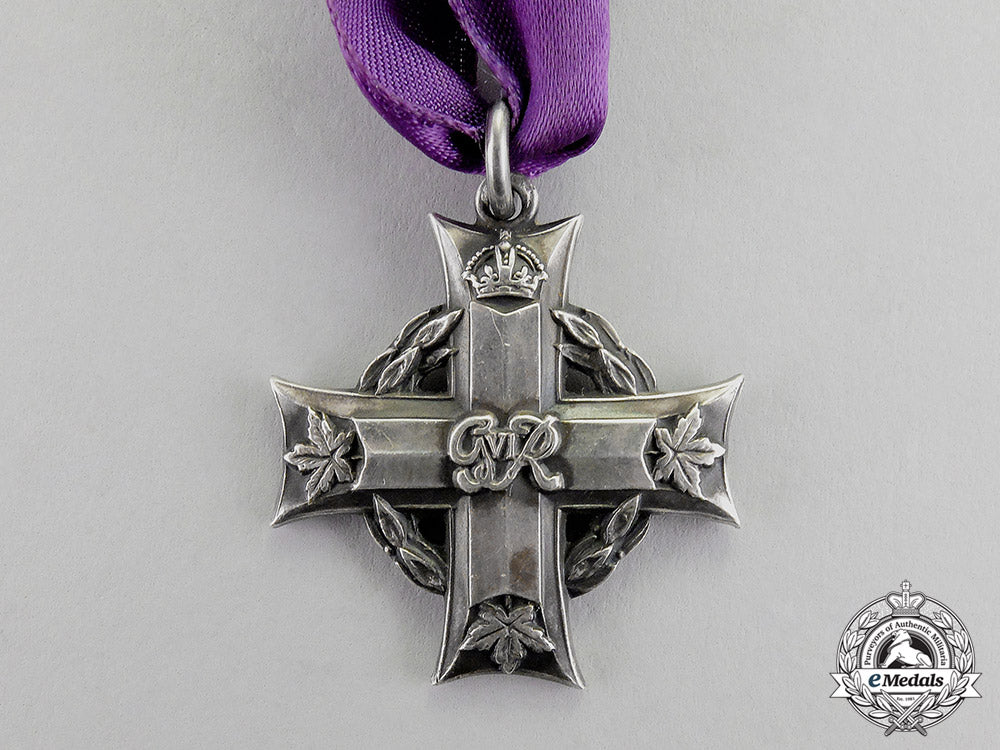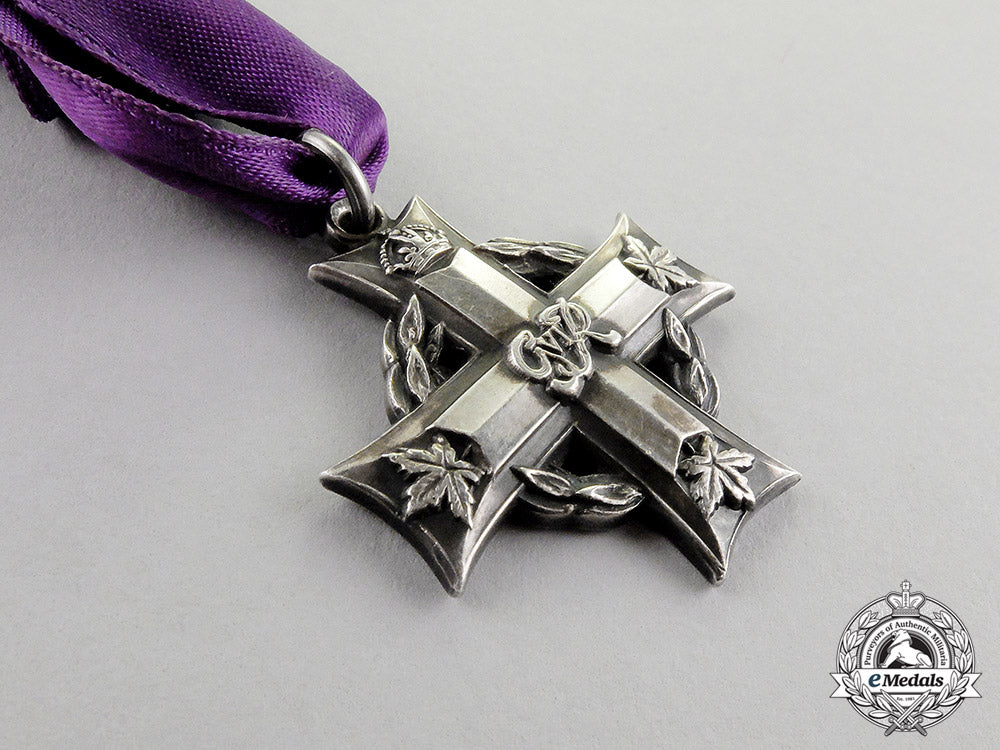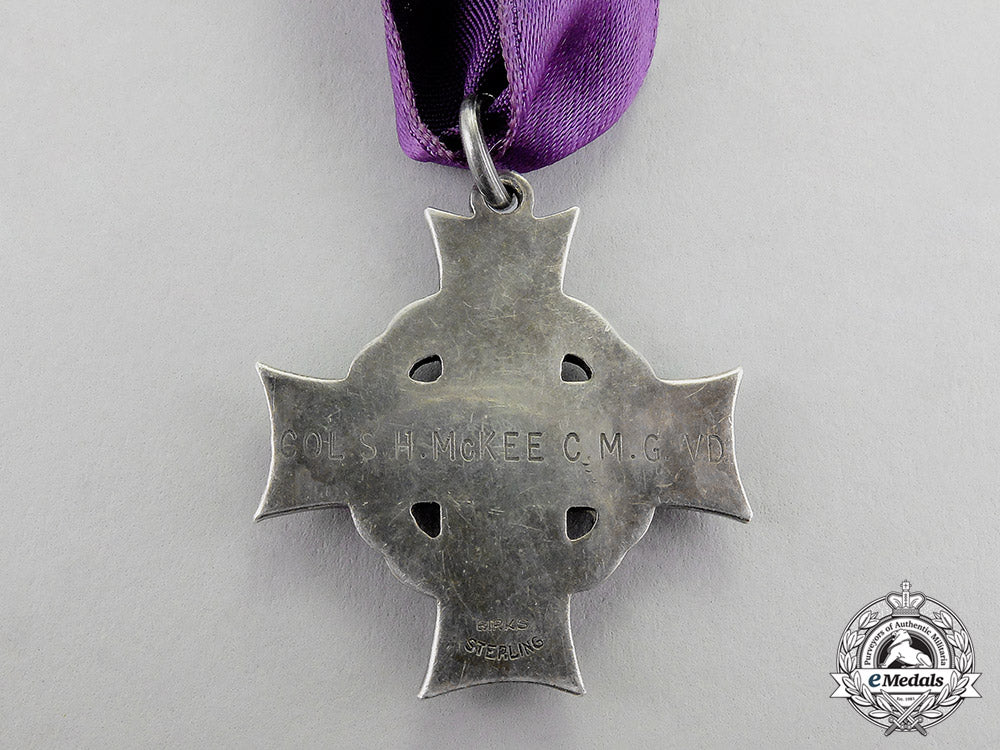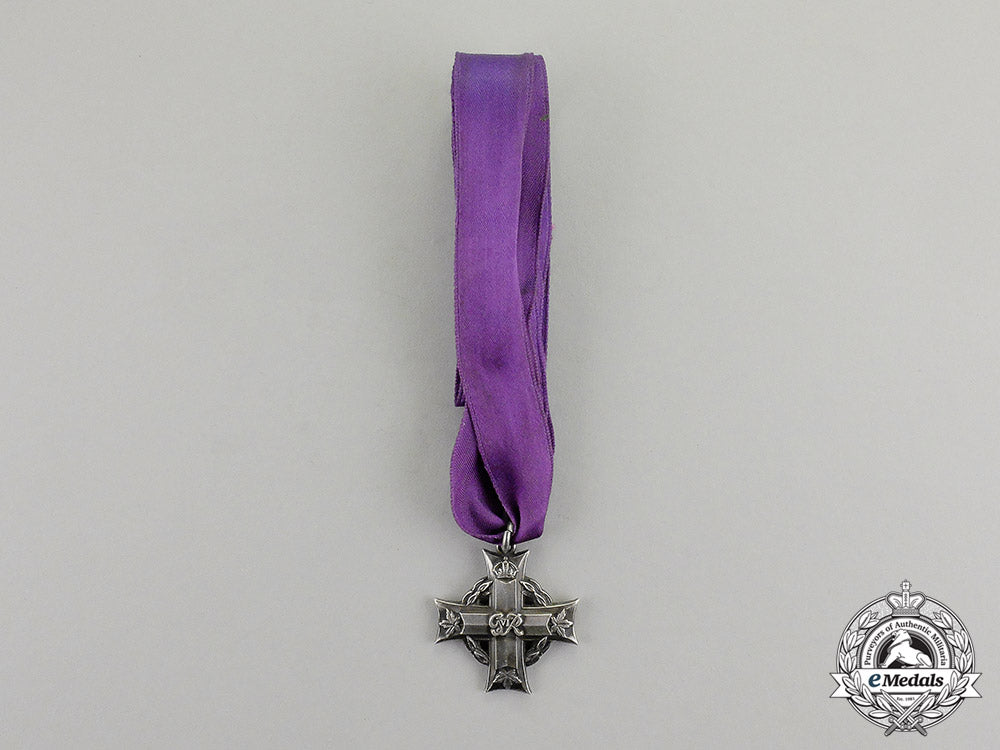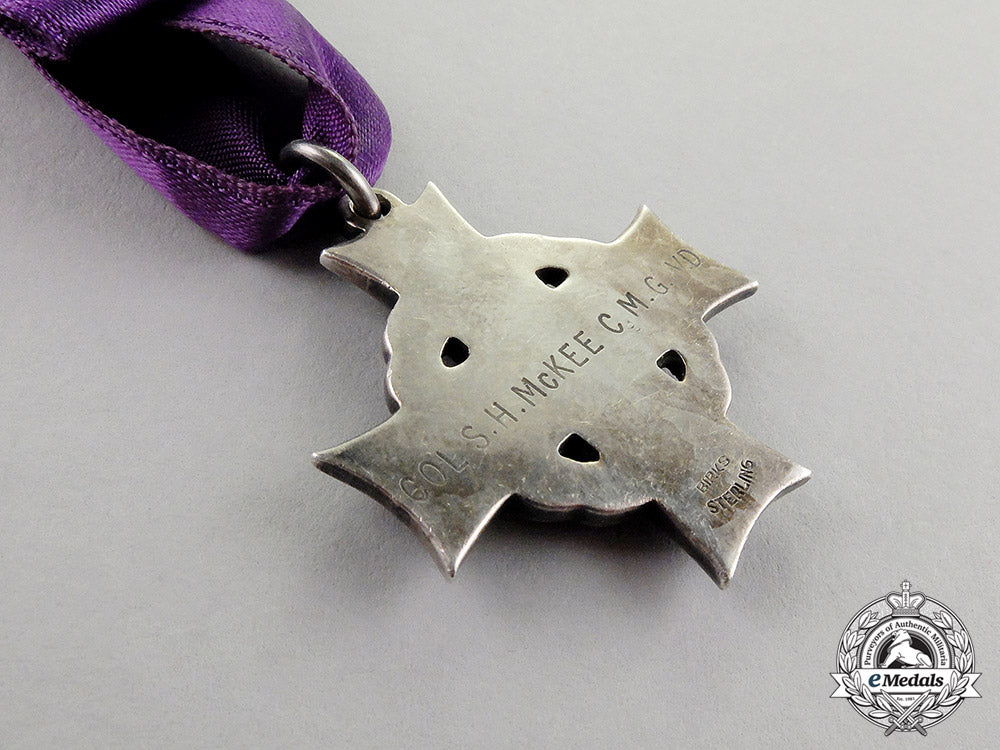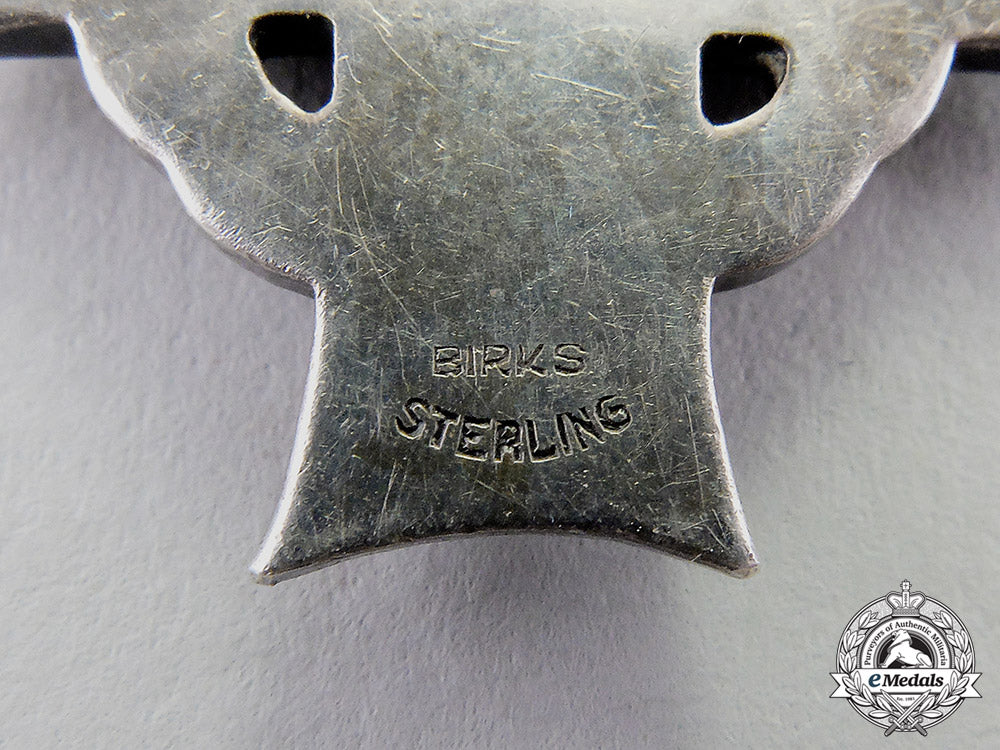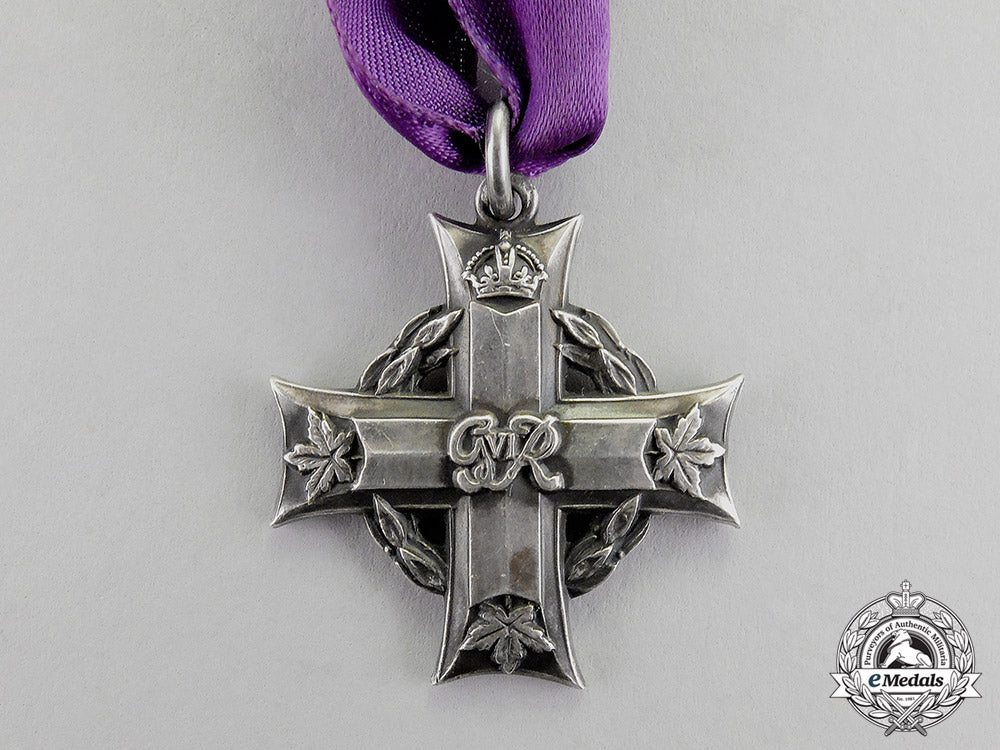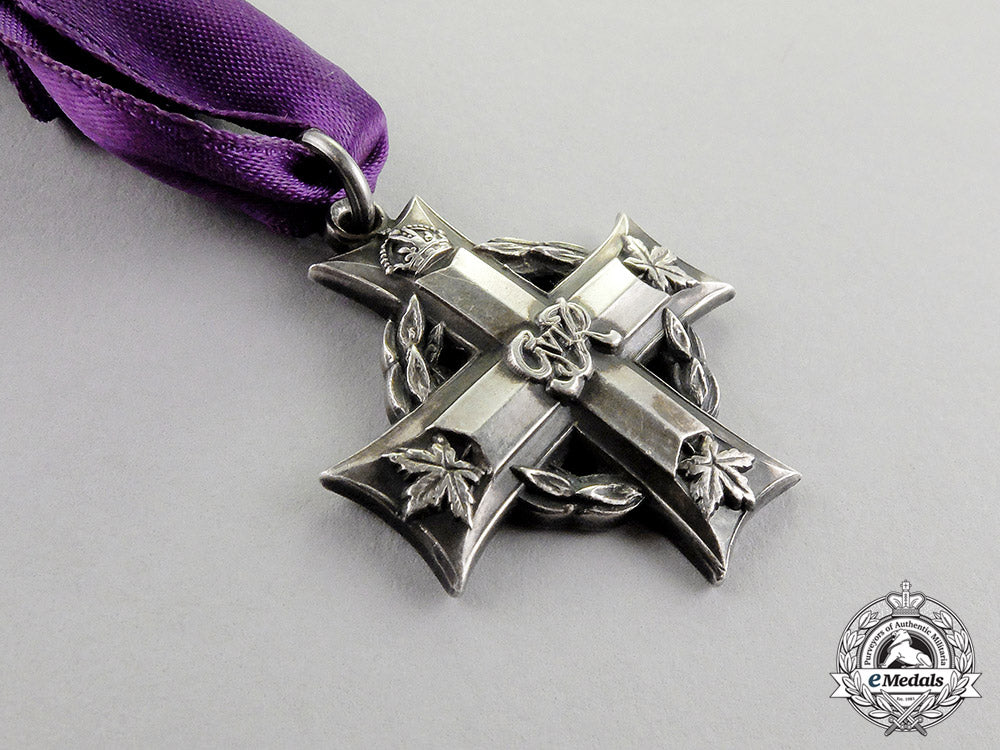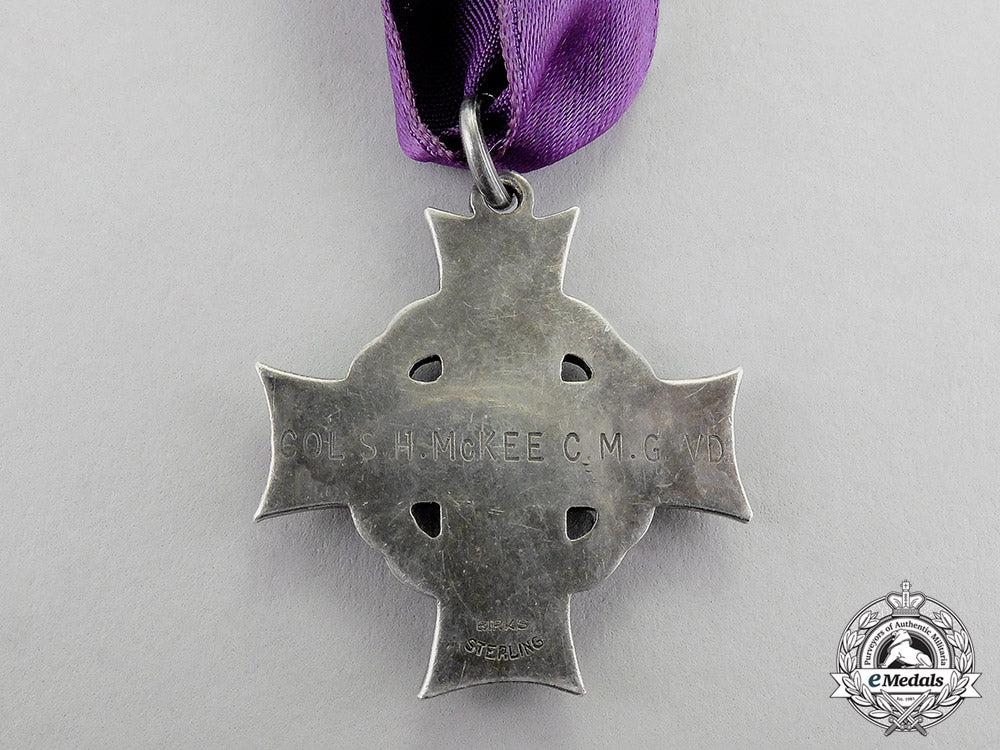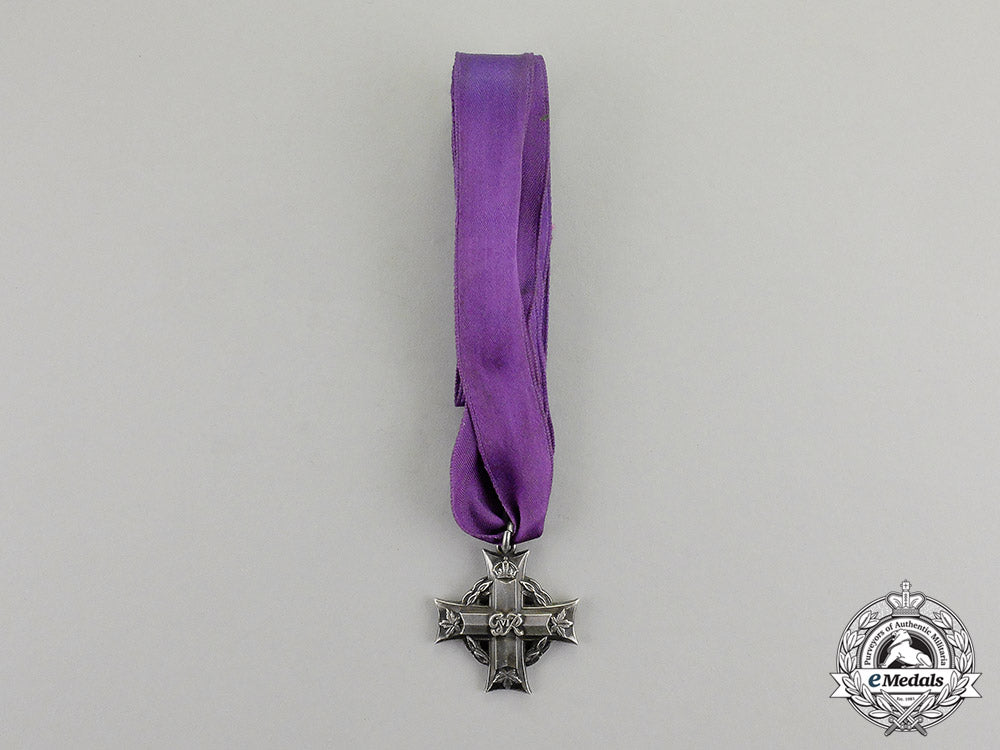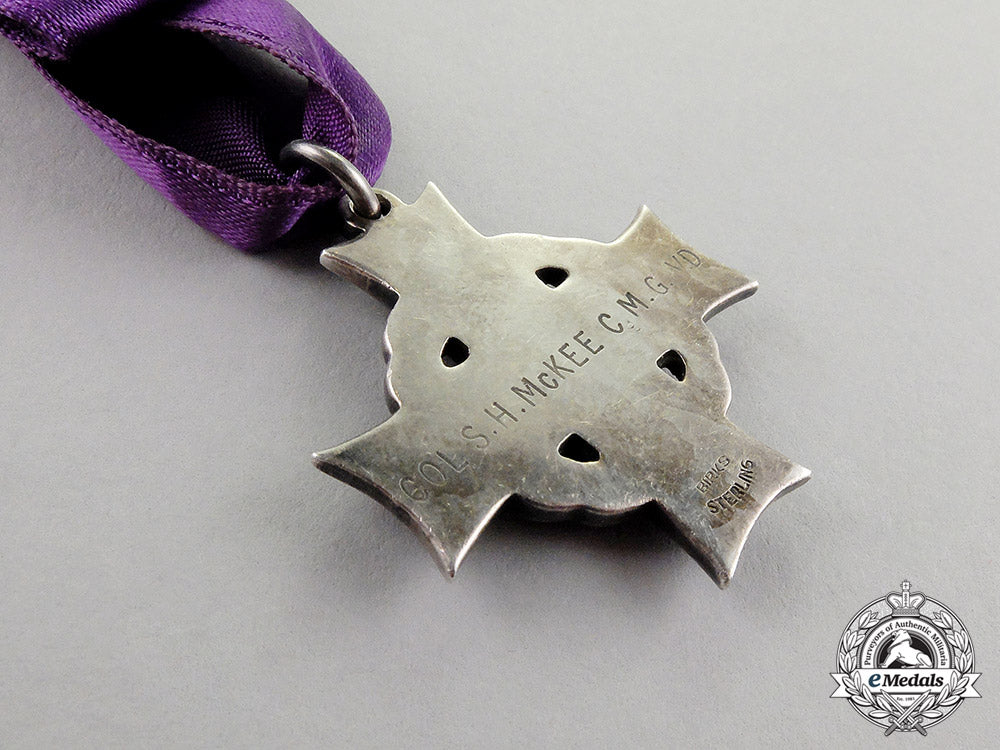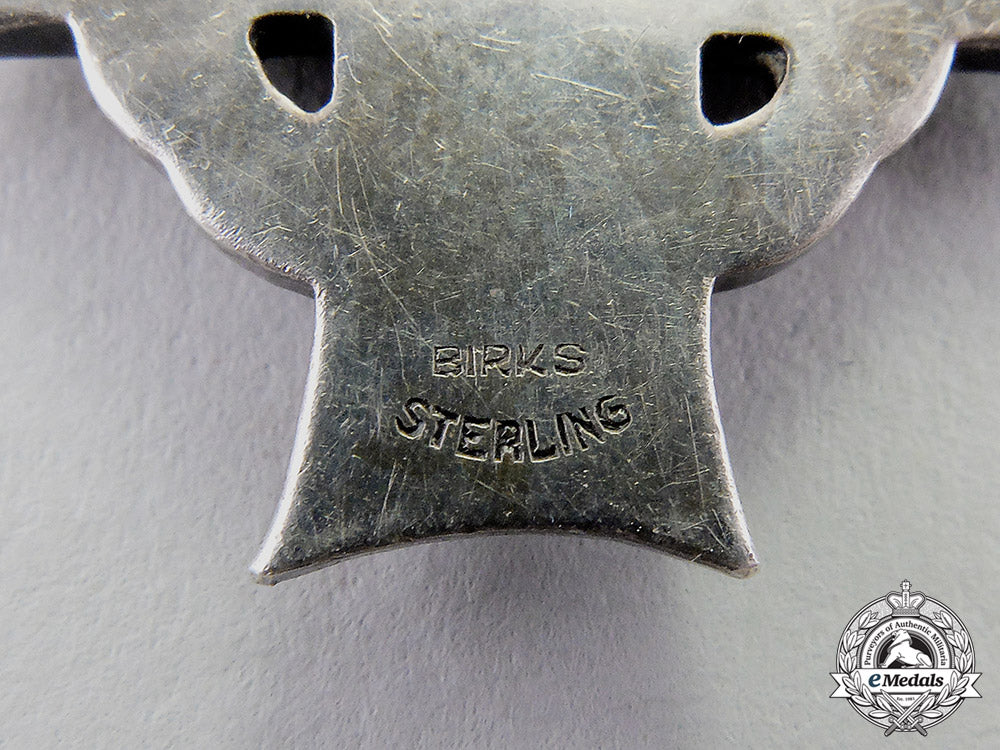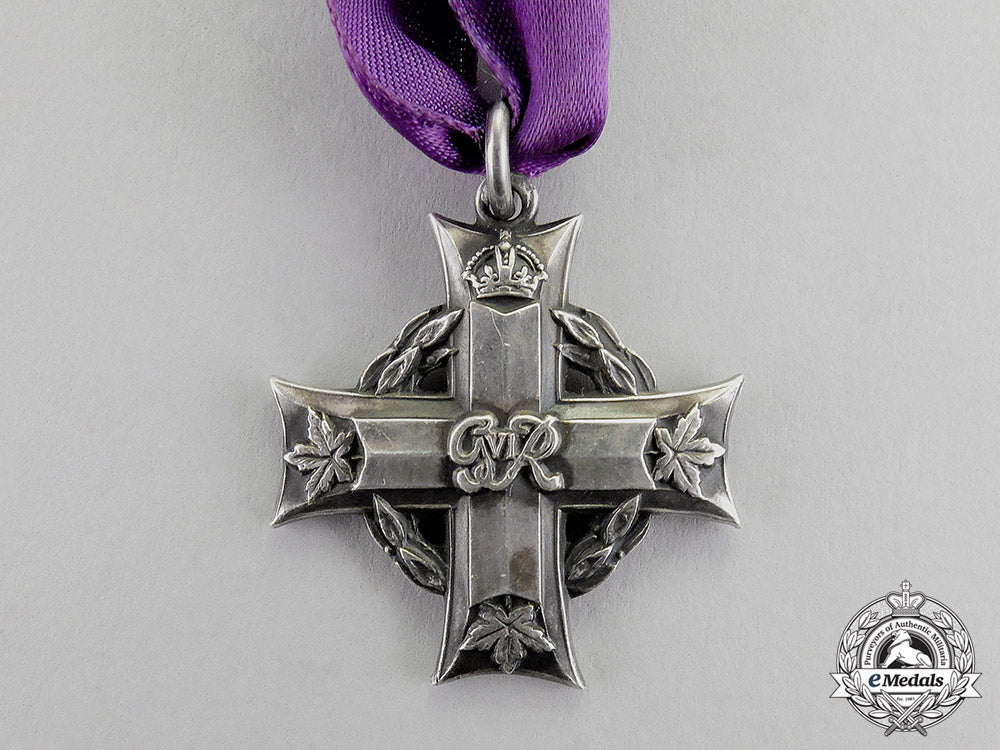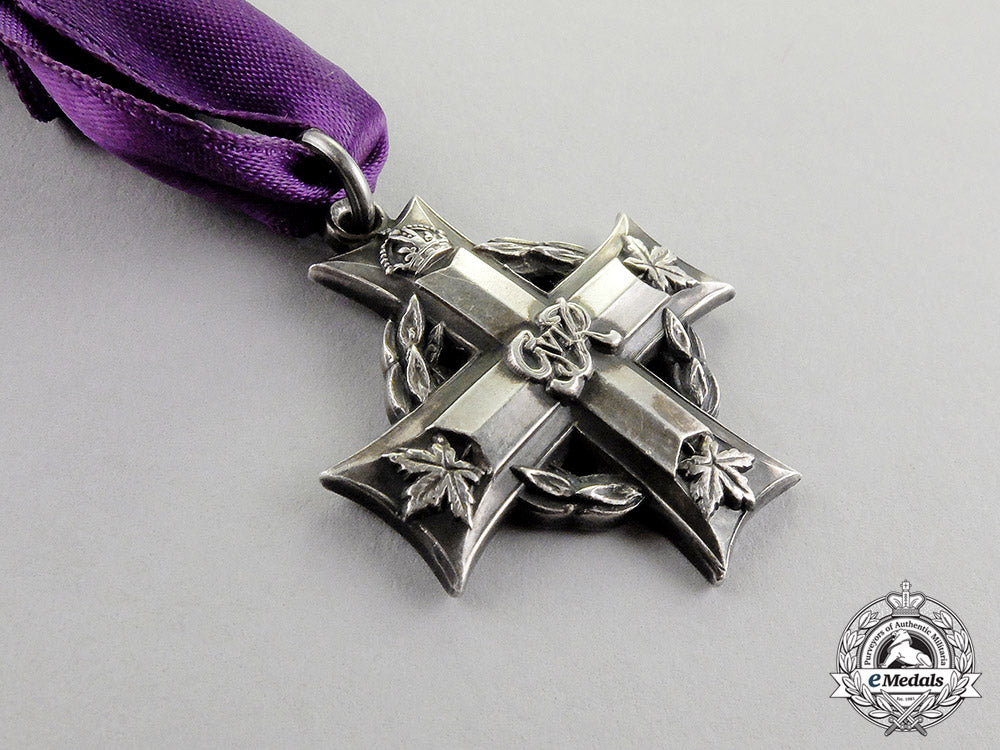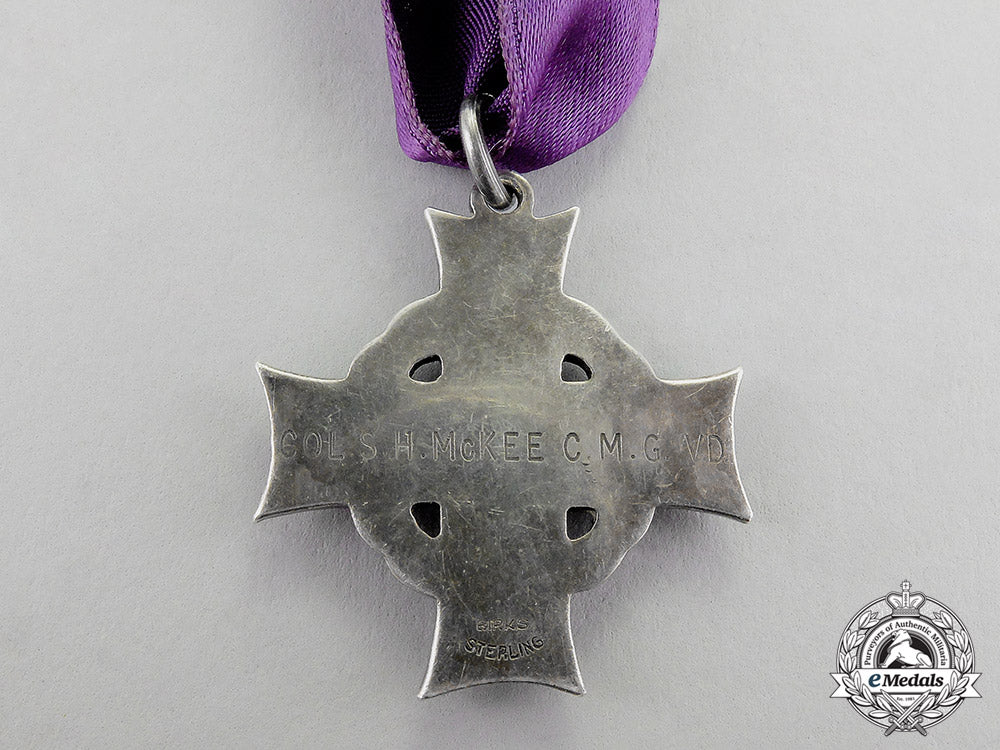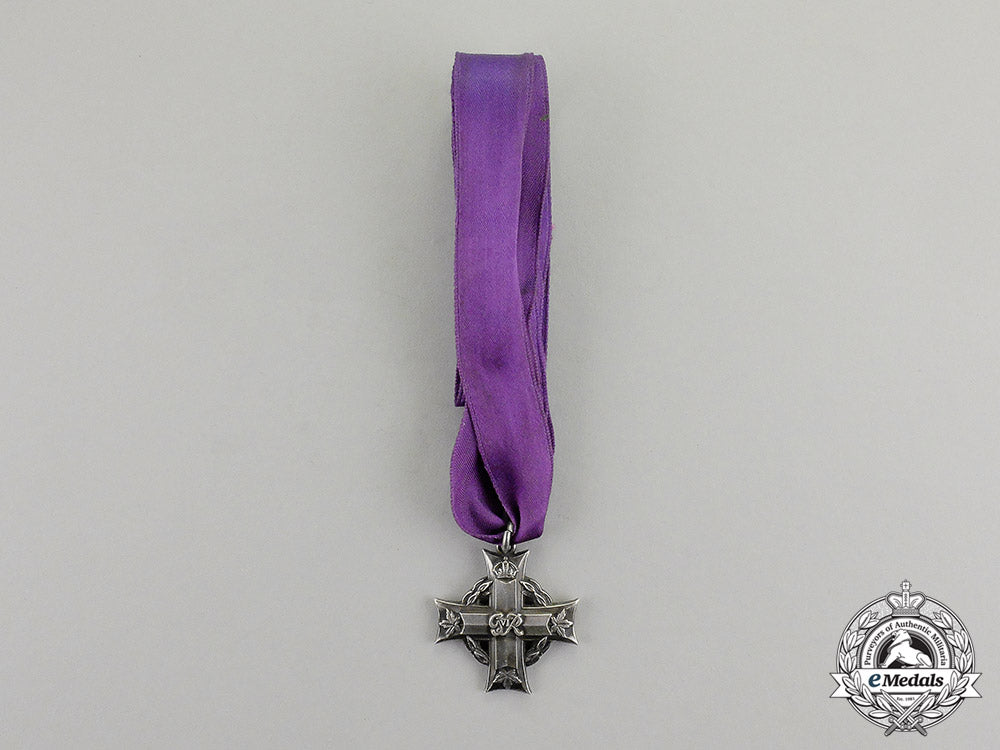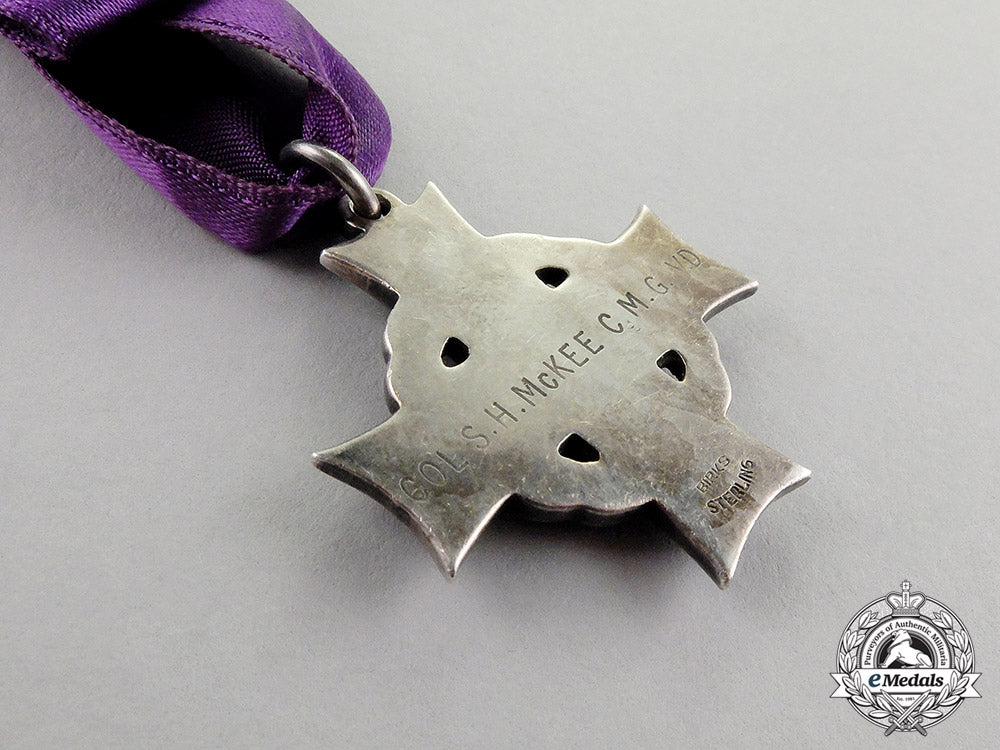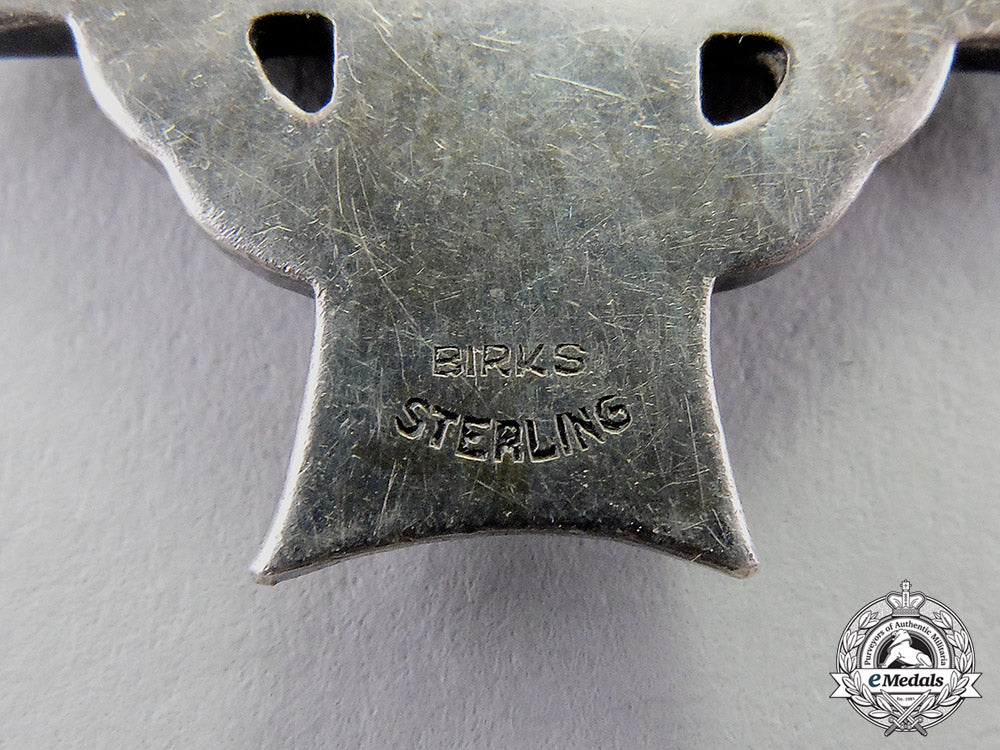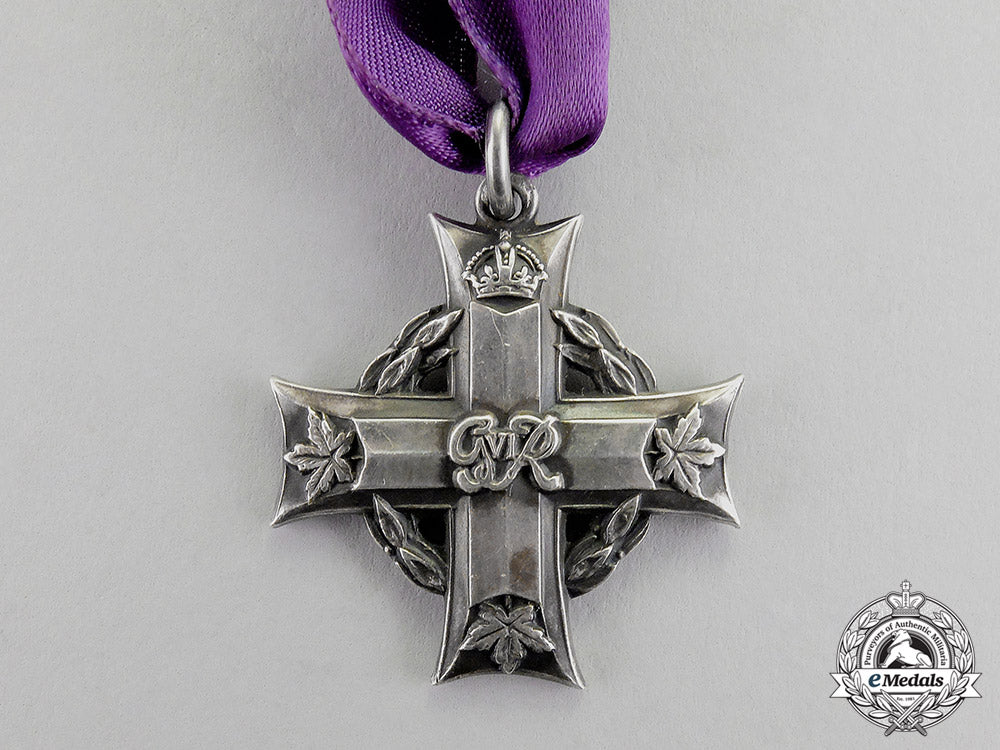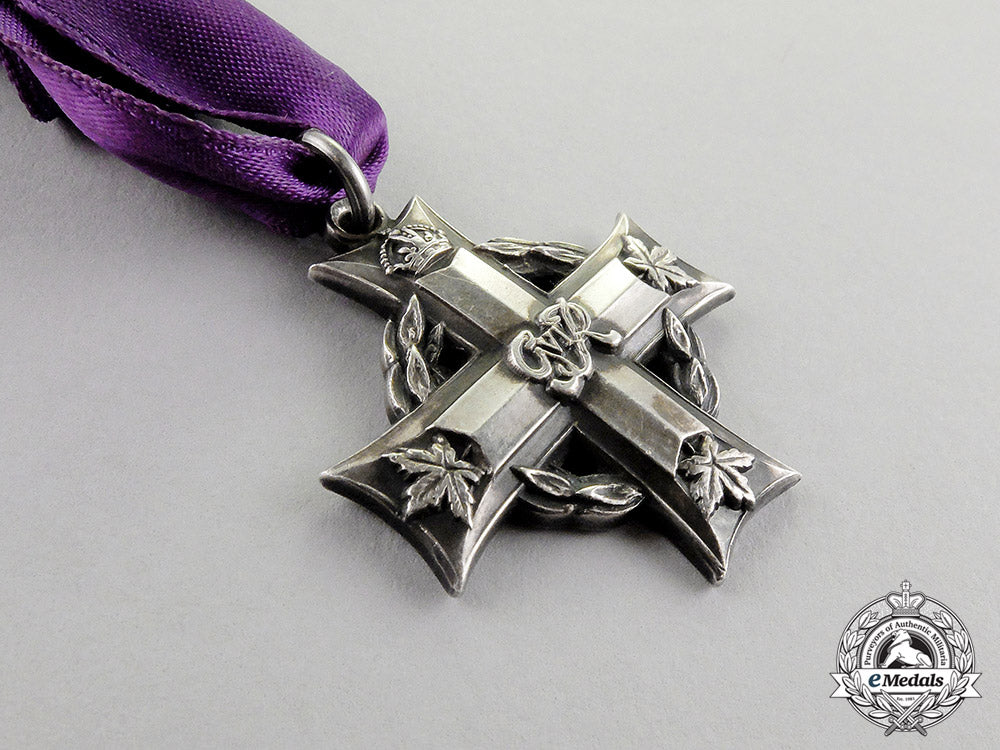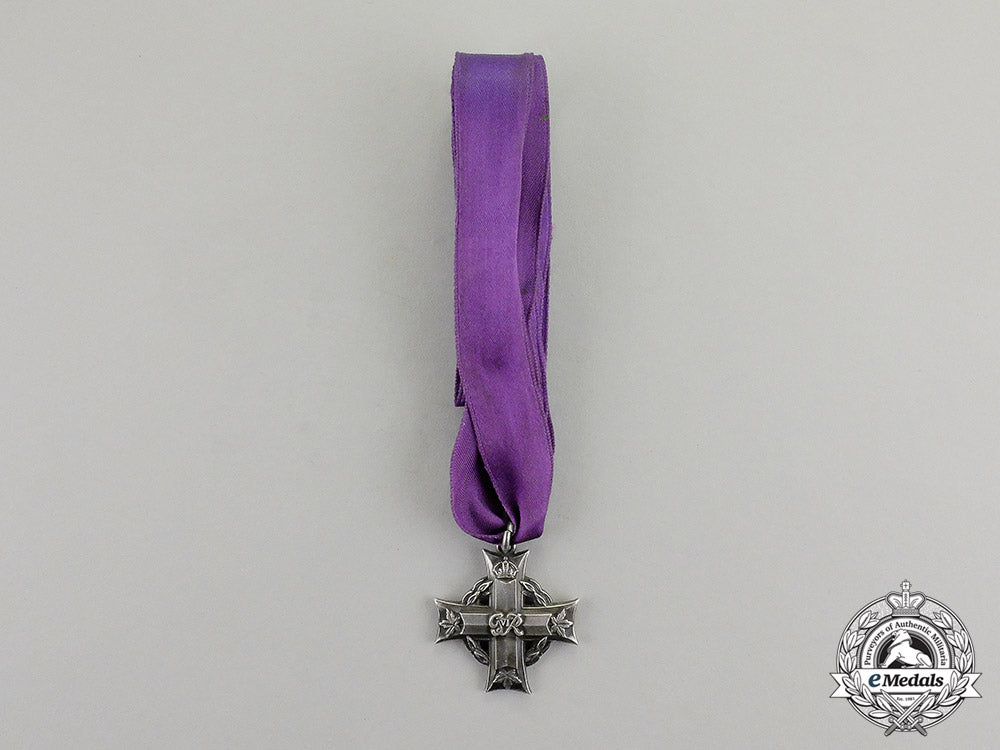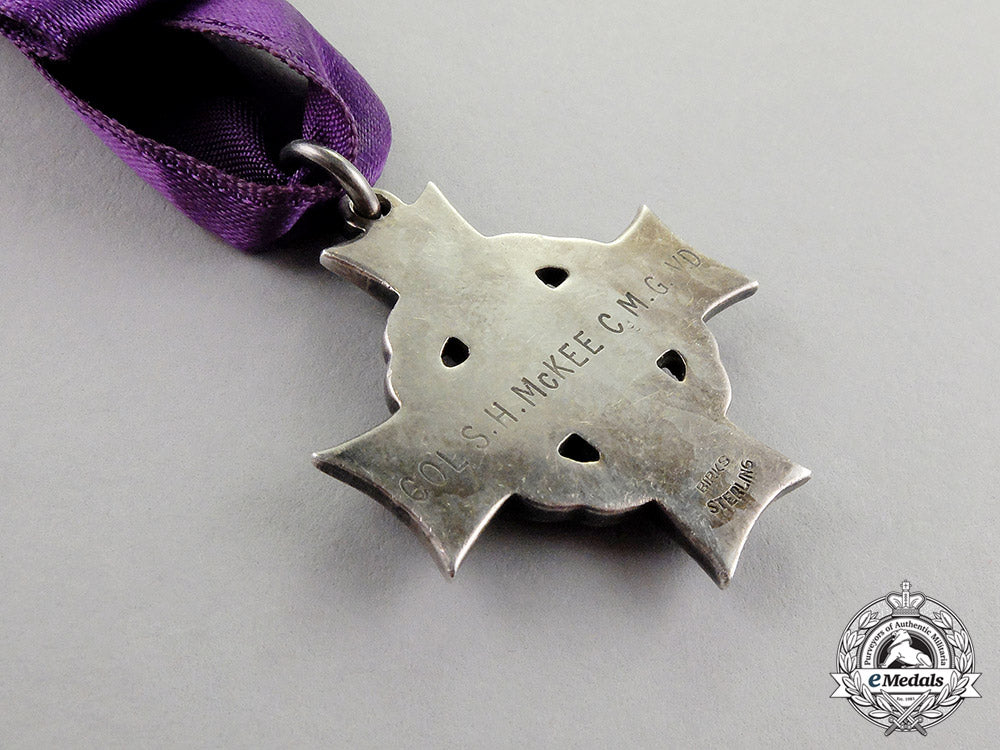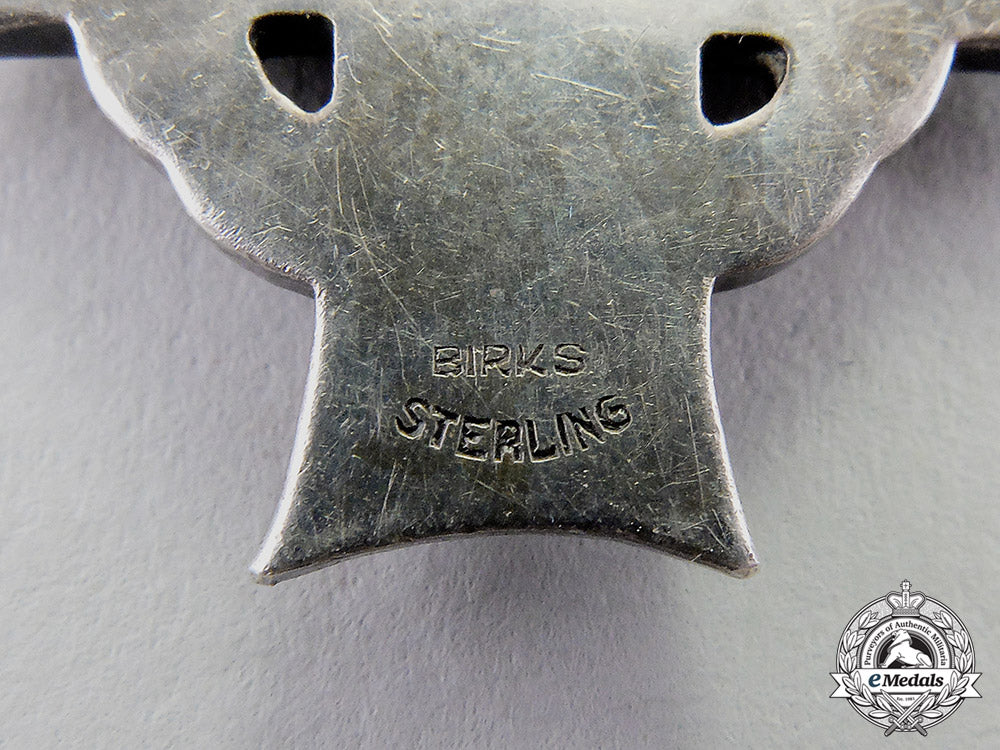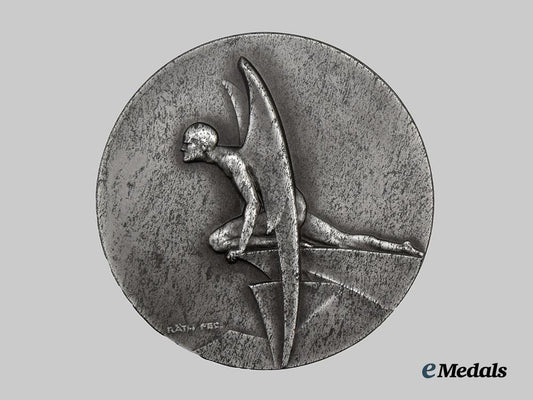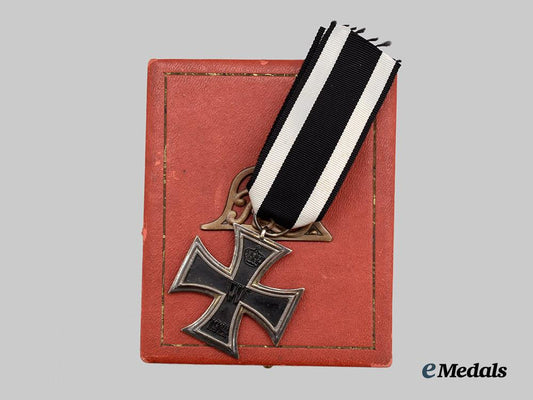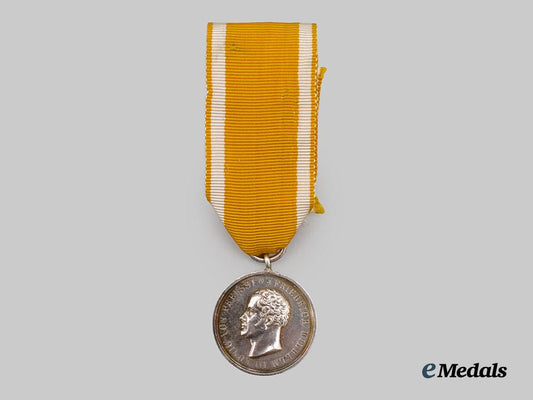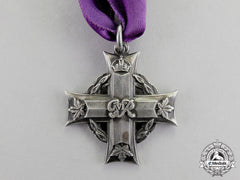Canada. A GRVI Memorial Cross, to First War Veteran Colonel Samuel Hanford McKee, No. 1 Stationary Hospital, Canadian Army Medical Corps, Ophthalmologist-in-Chief at Montreal General Hospital; George VI (COL. S.H. McKEE C.M.G. V.D.). Sterling silver, marked "STERLING" and maker marked "BIRKS" on the reverse, replacement neck ribbon, light contact and nicks on the reverse, better than very fine. Accompanied by copies of his Index Cards, Attestation Paper, Service Records, Medical Records, Discharge Certificate, along with assorted research papers.
Footnote: Samuel Hanford McKee was born on October 11, 1874 in Fredericton, York County, New Brunswick, the son of Samuel Hanford McKee and Jane Armour. His preliminary education was at public schools in Fredericton. He received his B.A. (Bachelor of Arts) from the University of New Brunswick in 1896 and while a student there, he played football for the school. McKee was a recipient of the Douglas Gold Medal in 1896 (the Douglas Gold Medal was founded by Sir Howard Douglas, Lieutenant Governor of New Brunswick and first Chancellor of King's College and was first awarded in 1833, valued at forty dollars, the medal was offered for competition every year among undergraduates for the best English essay on some subject proposed at the preceding Encaenia, an annual ceremony typically involving the presentation of honorary degrees to distinguished alumni and to distinguished personages from the worlds of arts and sciences). McKee left Fredericton to attend McGill University in Montreal, Quebec, where he graduated from the Faculty of Medicine with an M.D., C.M. (Medicinæ Doctorem et Chirurgiæ Magistrum = Combined Doctor of Medicine and Master of Surgery) in 1900. For several years he was a house doctor at Royal Victoria Hospital under Dr. Frank Buller, who had done much to fashion the careers of many young Canadian ophthalmologists. He left Montreal and proceeded to Germany, where he worked with Axenfeld of Freiburg and Greeff of Berlin. It was while with the former that McKee derived his greatest inspiration, with ocular bacteriology under such a master to destine his outstanding contribution to ophthalmology in his subsequent years of ophthalmic study. In 1906, he was invited to join the staff of Montreal General Hospital and was appointed at the hospital's Assistant Oculist and Aurist, along with being Assistant Demonstrator in Ophthalmology at McGill. In the same year, he prepared Montreal General's departmental pathology report and continued to do so over the years. Throughout his career, he was the official pathologist of the Montreal General Hospital department and had an “active interest in the lab aspect of Ophthalmology...[ever] since his graduation in Medicine.”
His main areas of research were: disorders of the retina, the pathology of tumours of the eye, the bacteriology of the conjunctiva, and he even carried on some experiments concerning the effect of certain vitamins upon the metabolism of the eye. By the beginning of the First World War, Dr. McKee was Associate Ophthalmologist at Montreal General. Upon the outbreak of hostilities, Dr. McKee enlisted with the First Canadian Contingent in August 1914. He was a resident of Montreal, Quebec when he signed his Attestation Paper with No. 1 Stationary Hospital, Canadian Army Medical Corps, on September 25, 1914 at Valcartier Camp, Quebec, at the age of 39, naming his next-of-kin as his wife, Shirley Britton Cowan McKee of Montreal, stating that he had nine years' previous service in the Canadian Militia, that he was Married, that his religion was Church of England and that his trade was that of a Physician. He sailed from Quebec City aboard the S.S. Athenia on October, 4, 1914, arriving in England shortly thereafter. He was placed on duty in London on November 5, 1914, which was soon followed by overseas service in France, where he was taken on strength of No. 1 Stationary Hospital on February 2, 1915. McKee was promoted to Temporary Lieutenant-Colonel on April 17, 1915. He was to transfer for service in another theatre of war, embarking Boulogne, France for England on July 29, 1915, then leaving for service in the Dardanelles on August 1, 1915. Lieutenant-Colonel McKee became Commanding Officer of the Canadian Stationary Hospital on Lemnos in Greece. It was while in Lemnos that he contracted "Ameobic Dysentery" (an infection of the intestines by a parasite causing diarrhoea that contains blood or mucus). He was invalided to England aboard the Hospital Ship S.S. Aquitania from the port of West Mudros on Lemnos, on October 21, 1915, a condition that would ultimately plague him until the fall of 1917. Upon arrival in England, he was admitted to Miss Pollock's Hospital, Weymouth Street, London on October 27, 1915, where his stay would entail two days, before being discharged on the 29th. A Medical Boards' report issued on November 1, 1915 stated that his "incapacity" would be "for about two months". Five and a half weeks later, he was admitted on December 9, 1915 to West Cliff Canadian Eye and Ear Hospital at Folkestone with a case of "Phlebitis" (the inflammation of a vein). After six days' treatment, he was discharged on the 15th. In his Proceedings of a Medical Board report, dated January 3, 1916 at West Cliff Canadian Eye and Ear Hospital at Folkestone, the doctor reviewed McKee's medical status, stating "this Officer was suffering from Amoebic Dysentry as detailed in Army Form A.45, Nov. 1st, 1915. He is still unfit for duty and we recommend one month's leave."
He was subsequently issued four weeks leave on February 3rd and upon return from leave, was declared "Fit for General Service" on March 1st. After his leave, he returned to West Cliff on March 2, 1916, where he was placed as Second-in-Command of the hospital. Lieutenant-Colonel Samuel Hanford McKee, Canadian Army Medical Corps, was awarded the Companion of the Most Distinguished Order of St. Michael and St. George, the announcement appearing in the Supplement to the London Gazette 29565 of Tuesday, May 2, 1916, on Tuesday, May 2, 1916, page 4428. He was also twice Mentioned in Despatches for conspicuous services in the Gallipoli campaign, the first of which was an announcement that appeared in the Supplement to the London Gazette 29569 of Friday, May 5, 1916, on Friday, May 5, 1916, page 4519. He was acknowledged again in a War Office communique of August 13, 1918, his name has been "brought to the notice of the Secretary of State for War, for valuable services rendered in connection with the war". McKee's "Amoebic Dysentery" continued to be an ongoing issue, as he was admitted to Helena Hospital, Shorncliffe on March 18, 1917, now 42 years of age. In his Proceeding of a Medical Board report dated March 26th at Helena Hospital, is stated that he had developed "Colitis" (an inflammation of the inner lining of the colon). The doctor reported that "This officer was admitted to Helena Hospital 18-3-17 with a diagnosis of Amoebic Dysentry which was contracted in Lemnos, and for which he was boarded." and declared McKee "Not Fit for General Service" as we was projected to be "permanently unfit", however, he was "Fit for Home Service" and was discharged on March 30th. That Fall, he was admitted to the Canadian Military Hospital at Hastings on September 12, 1917 with a case of "Renal Colic" (a type of pain exhibited when urinary stones block part of the urinary tract). Two months later, in his Proceedings of a Medical Board, dated November 9, 1917, it was noted that his health had vastly improved when he was re-examined at Shorncliffe and he was again declared "Fit for General Service". In 1917, Dr. McKee's name was placed on the Montreal General Hospital Roll of Honour. Lieutenant-Colonel McKee was promoted to Temporary Colonel, effective November 10, 1917, the announcement appearing in the Supplement to the London Gazette 30443 of Friday, December 21, 1917, on Saturday, December 22, 1917, page 13442. In the rank of Colonel, he was appointed officer in charge of the West Cliff Canadian Eye and Ear Hospital at Folkestone. He attended an Anti-Gas Course of Instruction from August 26 to 30, 1918, then proceeded to France on "Special Duty" on September 18, 1918, before returning to England on October 2, 1918. He was placed on command to London from January 2 to 3, 1919. After his medical examination upon leaving the service, performed at No. 11 Canadian General Hospital, his health was declared as "Good" on January 29, 1919. McKee relinquished his appointment as Officer Commanding on returning to Canada, after being transferred to the CEF in Canada upon the cessation of hostilities on February 20, 1919, returning to Canada aboard the S.S. Lapland. Upon arrival in Canada, he was posted for duty under the Assistant Director of Medical Services at Military District No. 4 in Montreal, Quebec, on March 27, 1919. His medical condition was re-assessed at Sainte-Anne-de-Bellevue, Quebec on January 14, 1920, where the doctor reviewed his medical history.
He noted that McKee had been admitted to hospital, where his stool examination proved positive and had passed through different hospitals until 1917, when he was declared "cured" but now was fit for service in Canada only. Colonel Samuel Hanford McKee, Canadian Army Medical Corps was struck off strength of the Assistant Director of Medical Services staff at Military District No. 4 in Montreal, Quebec, on January 15, 1920. He was credited with having served in Canada, England, France and Salonika with the Canadian Army Medical Corps: as a Major with No. 4 Field Ambulance, as a Lieutenant-Colonel with No. 3 Stationary Hospital, and as a Colonel at West Cliff Canadian Eye and Ear Hospital at Folkestone, with No. 1 Stationary Hospital and at Military District No. 4 in Montreal. For his First World War service, he was awarded the the 1914-15 Star, British War Medal and the Victory Medal. Upon the cessation of hostilities, Dr. McKee settled down to the pursuits of peace and applied himself enthusiastically to his scientific work. He resumed his medical career, with a strong interest in war lesions of the eyes. He published an article entitled "War Lesions of the Fundus" in the American Journal of Ophtalmology, Volume 6, of September 1923. It contained the original plates for his and a series of thirty-three hand-drawn case histories of injuries of the eye during the First World War, the illustrations done by E. Bind. These hand-drawn case histories became a gift from Dr. McKee to the Osler Library, the original plates originally presented to the Medical Library of McGill from the Osler Library, and then transferred back to the Osler Library. His contributions to ophthalmic literature were numerous: his chapter on "Ocular Bacteriology" in Wood's "American Encyclopedia of Ophthalmology" marked him as an outstanding authority in that particular branch of the specialty. He was a guest speaker at medical societies in the United States on frequent occasions. He was a member of numerous medical societies, including the American Ophthalmological Society and the Academy of Ophthalmology, but it was the Academy from which he derived his greatest enthusiasm and in which he formed his most enduring friendships. He was elected President of the Academy in 1931, a significant honour for a Canadian. He was also past President of the Montreal Medico-Chirurgical Society. Furthermore, 1931 saw Dr. McKee contribute chapters to two textbooks: "Diseases of the Conjunctiva" published in Sajou’s Cyclopedia of Medicine, Vol. IV, and "Diseases of the Conjunctiva, except Trachoma" which was to be published in the Textbook of Ophthalmology, Saunders & Co., Philadelphia. In 1932, Dr. McKee presented the Presidential Address to the meeting of the American Academy of Ophthalmology and Oto-Laryngology which he hosted in Montreal. Over the years Dr. McKee acquired a reputation as an excellent researcher.
His academic contributions were of the highest order and he was considered a world authority on bacterial conjunctivitis. Throughout the 1930s, Dr. McKee continued to publish an average of four to five papers a year ranging from observations of syphilis in the eye to hypertension retinitis and neuromyelitis optica. In 1932, he published a paper on “Blindness from Methyl Alcohol Successfully Treated by Lumbar Puncture,” carrying on in the tradition of Dr. Frank Buller and Dr. Casey Wood’s publications on this subject. In 1933, Dr. McKee presented "Observations of the Fundus Oculi in Diabetes Mellitus" to the American College of Physicians, a report based on the study of 1,272 cases. His work on eye tumours was reported to the American Academy in 1936. Dr. McKee's special interest and research in Ophthalmology saw him named as a Clinical Professor in Ophtalmology at McGill in 1928, then named as Ophthalmologist-in-Chief at Montreal General Hospital in 1931, a position he would hold until 1941. In 1938, he was made Secretary of the Montreal General Hospital Medical Board, becoming its Chairman the following year. In addition, McGill promoted him to Professor of Ophthalmology and he was on staff at the Children’s Memorial and Alexandria Hospitals. At the 1940 Pan American Congress of Ophthalmology, of which he was its Vice-President, he described a new method of detecting hardening of the arteries in diabetics. Throughout Dr. McKee’s tenure as Ophthalmologist-in-Chief at Montreal General, both the hospital in general, and the hospital’s ophthalmology department in particular were undergoing changes. Dr. McKee led his department during a period of advances and by his example contributed to and encouraged clinical research. During the 1930s the number of patients attending the ophthalmology out-patient clinics continued to grow, surpassing 10,000 per year, and even reaching 15,000 in some years. In addition, the number of indoor patients almost doubled to nearly 400. The faculty of medicine of McGill University was at once appreciative of the value of his talents, and after acting in the various junior positions, he was finally appointed Professor of Ophthalmology in 1939, serving in that capacity for two years. Dr. McKee was also the Consulting Ophthalmologist to the Royal Victoria Hospital, the Children's Memorial Hospital, and to the Alexandra Hospital for Infectious Diseases, along with acting for the Dominion Government in the Department of Pensions and National Health. Dr. McKee was a forerunner of the Clinical Scientists of the 1980s and 1990s and it is remarkable that he accomplished so much academically, while keeping up a large practice outside the hospital, receiving no salary or remuneration from McGill University or Montreal General Hospital. In his latter years, Dr. McKee had spent the more rigorous months of the Canadian winter in Florida and much of his summertime in Gananoque, Ontario, in the Thousand Islands.
Upon the outbreak of hostilities during the Second World War, when all departments in the Montreal hospitals were depleted, he was requested to re-enter the service of the Montreal General Hospital, from which he had only recently retired, readily accepting the proposition. Dr. McKee was a keen golfer and a member of the Royal Montreal Golf Club.For many years he took a keen interest in badminton, He was not only one of the founders and the first president of the Atwater Badminton and Squash club, but was also President of the Provincial Badminton Association for several terms. He was a member of the Mount Royal and University Clubs. Dr. McKee was an Anglican and attended the Church of Saint John the Evangelist. Dr. Samuel Hanford McKee died suddenly, on November 25, 1942 in Montreal, at the age of 68, his death coming as a shock to his many friends and admirers in the city of Montreal. He had been enjoying his usual good health until two weeks previous, when he was seized with an acute heart attack from which he never rallied. A Memorial Cross was issued to his wife, Shirley Britton Cowan McKee (1882-1963), her address listed as c/o Canadian Imperial Bank of Commerce, Montreal, Quebec, as his eventual death was attributed to his war service. He was buried in Gananoque Cemetery, Gananoque, Leeds and Grenville United Counties, Ontario, Plot: Block 19, his grave marker stating "TO LIVE IN HEARTS WE LEAVE BEHIND IS NOT TO DIE". Upon her death in 1963, his wife, Shirley, was buried beside him.

